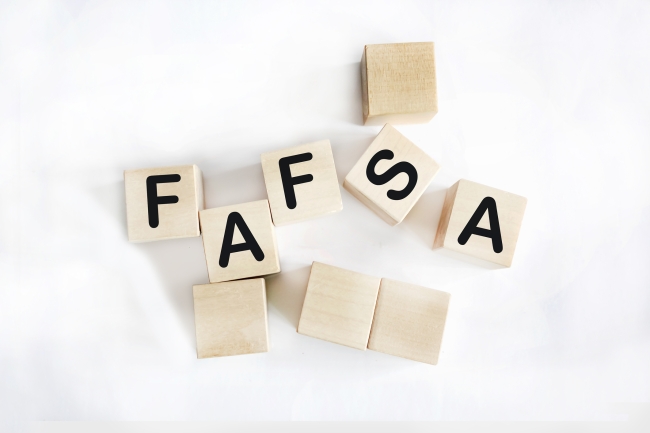You have /5 articles left.
Sign up for a free account or log in.

Sviatlana Zyhmantovich/iStock/Getty Images Plus
Free Application for Federal Student Aid (FAFSA) submissions nationwide from high school seniors are down more than 30 percent compared to this time last year. Given the connection between FAFSA completion and college enrollment, the implications are potentially disastrous for matriculation this fall.
The rollout of the 2024–25 FAFSA, which high school seniors are now completing, has been rocky. From an opening pushed back three months, from October to January, to technical difficulties to the delayed receipt of award letters, students making decisions about where (and whether) to attend college this fall are facing significant headwinds.
As of March 8, the most recent data release, this year’s high school seniors have submitted 32.9 percent fewer FAFSAs year-over-year (a difference of about 625,000 fewer students), and there’s a 16–percentage-point submission-rate gap nationally between the classes of 2023 and 2024.
There’s still time to help students who have yet to submit the FAFSA, but the window is closing, and it’s closing quickly. This is an emergency for high school seniors, especially those seniors from low-income and/or first-generation backgrounds, many of whom are students of color. These students stand to benefit the most from need-based federal and state financial aid programs that would make college more affordable.
This isn’t the time for retrospective recriminations about who did what, or what could have been different. There will be plenty of time for that later. What’s needed now is a concerted “complete the FAFSA” message to echo from every available channel and bully pulpit. Students and families need to hear that (1) it’s not too late to complete the FAFSA and (2) the financial aid that will help make postsecondary education more accessible is still available.
There have been about 5 percent more FAFSAs submitted through the first 10 weeks of this FAFSA cycle than there were through the first 10 weeks of the previous cycle. This is encouraging, but that number needs to grow. FAFSA delays pushed back the starting line, but the finish line for the fall semester remains the same. We’re well into March and high school graduations in some parts of the country are a scant ten weeks away.
There’s reason to believe this FAFSA cycle might be primed for a bounce back. There should be considerable pent-up demand from students who would have normally submitted in October to December. These first three months usually account for a substantial portion of all FAFSAs completed by high school seniors.
We haven’t really seen that kind of “breaking the dam”-level momentum from this cycle, and it’s also unlikely that students’ demand for postsecondary education dropped by a third within the span of a graduating class. We still have a lot of students who want to matriculate.
To that end, as students and families who said “the heck with this” in the early going come back or hear that the FAFSA is functioning, we will hopefully see the rate of submissions pick up. There are also some built-in on-ramps. For example, there are a lot of state financial aid deadlines still to come where we normally see big increases. California on April 2 and Tennessee on April 15 will be big bellwethers.
Stepping back, it’s worth remembering the reasons why this year’s FAFSA got the “Better” moniker. Connecting the FAFSA directly to federal tax information from the Internal Revenue Service speeds up the process for many students and families, and the new Student Aid Index (SAI), which replaced the misnamed Estimated Family Contribution (EFC), yields broader Pell Grant eligibility and larger Pell Grant awards for many eligible students. The old FAFSA was hardly beloved by students, families and advocates, which drove the reforms we’re now experiencing. When the FAFSA returns to an Oct. 1 opening and less of a frenzied timeline, the new benefits will be clearer to see.
That 10,000-foot picture is understandably cold comfort to students and families right now. That’s why everyone with an interest in students’ postsecondary futures from the White House to high school counselors to governors and other elected officials, state agencies, community-based organizations, philanthropies and business communities need to pull in the same direction.
The connection between the FAFSA and postsecondary enrollment is well documented, and students’ postsecondary futures are on the line, just as they were when FAFSA completions last declined for the classes of 2020 and 2021 due to the COVID-19 pandemic. The National Student Clearinghouse Research Center observed enrollment declines for both classes. Let’s not repeat that outcome here.
The alarm bells ringing aren’t hyperbole; they’re reality. Closing the FAFSA gap for this class of seniors is hardly inevitable on the current course, but if we act now in a concerted fashion, it is still possible.



